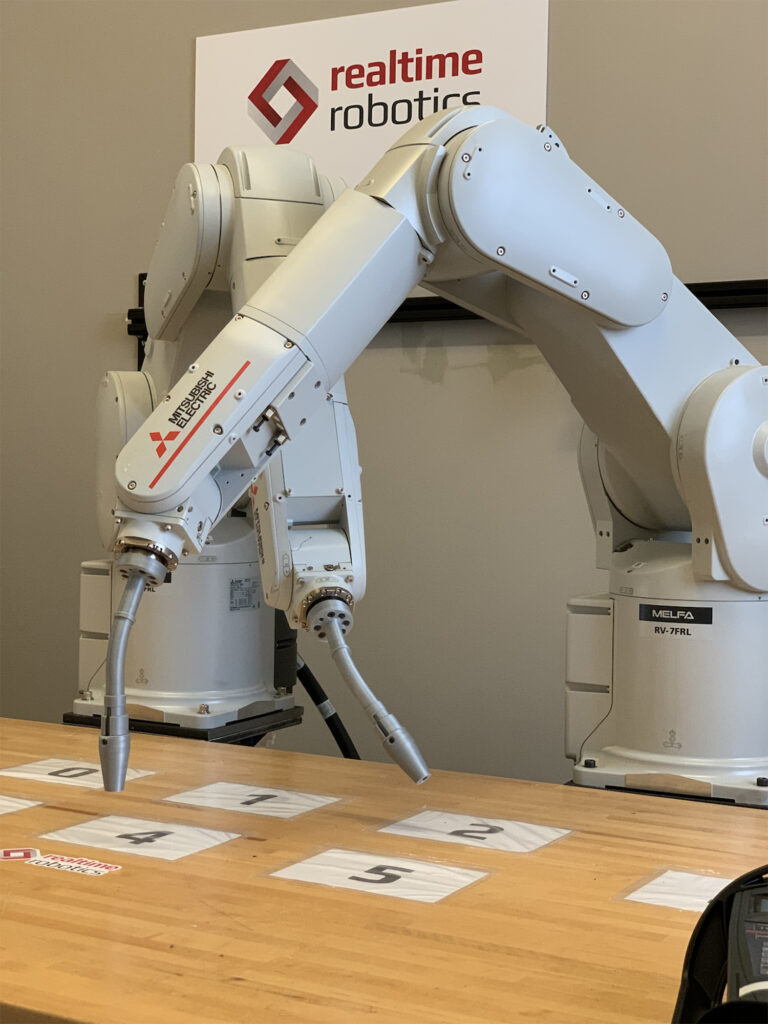Oliver Giertz examines the strategies that can enable cobots to operate safely and efficiently with humans in unstructured and dynamic environments
Collaborative robot installations are repeatable, reliable and provide an environment where humans and robots can work together side by side.
Certainly this has given many users a solution for increasing productivity, but in some cases there are limits to what can be achieved in terms of the flexibility and sophistication of the application.
However, the latest developments in collaborative robots and their control technologies look set to change that, defining a new paradigm for speed and flexibility in cobot workspaces.
With cobots programmed to follow pre-defined motions and actions, the automation solution is reliable and repeatable, but it is not flexible.
True flexibility comes from the ability to have robots which, rather than following pre-defined paths, can instead make motion decisions for themselves, intelligently selecting from multiple options.
The result would be cobot workspaces that are not only repeatable, but also flexible and optimised.

However, just setting up pre-defined motion paths can imply significant programming effort, plus the associated simulation, testing and evaluation. When we talk about ultimate flexibility, what we want is not pre-defined motion paths, but rather dynamically defined motion paths. Creating a collision-free environment with conventional technologies would require a gargantuan feat of programming.
Eliminating the potential of collisions
The solution lies within some of the same technologies that are being used in industrial robot cells. These technologies can deliver increased speed and flexibility to cobot working environments.
In particular, Mitsubishi Electric and Realtime Robotics have worked together to simplify and accelerate robotic automation in unstructured and dynamic environments.
The custom solution combines Mitsubishi Electric’s collaborative robots with the control and programming technologies of Realtime Robotics. It is built around the Realtime motion planning accelerator hardware and RapidPlan Create software.

RapidPlan removes the need for manual motion planning and eliminates robot interlocking, significantly reducing deployment time and cost for multi-robot cells.
The specialised software enables robots to evaluate millions of alternative motion paths to avoid a collision and choose the optimal route before making a move – all in milliseconds.
This can provide a complete solution in a structured environment where there is no requirement to account for unplanned obstacles. But in a collaborative robot setting, the human operator is an unknown variable that needs to be accounted for.
Here, installations can make use of Realtime Robotics’ RapidSense technology, which extends the functionality of RapidPlan by using up to 8 3D cameras to create a merged point cloud. During run-time, it perceives unknown objects and generates paths to avoid any contact.
Using RapidPlan and RapidSense in a cobot environment, users can reap the benefits of optimised work cells. The technology removes the need for PLC interlocks, and should one cobot in the cell be required to shut down for maintenance, there can be immediate, automated adjustment of the other cobots to minimise or prevent unscheduled cell downtime.
Importantly, all of this comes with simplified set-up, with Mitsubishi Electric and Realtime Robotics able to demonstrate up to a 10x reduction in initial programming and implementation time.
Multi-robot work cells
Further, the partnership between Mitsubishi Electric and Realtime Robotics paves the way for multi-robot work cells that combine both industrial robots and purpose-designed collaborative robots to work alongside people. It builds on the existing initiative between the two companies to enable robots to work together in environments where there might be unplanned obstacles, with the robots dynamically planning around the obstacles in their workspace.
Bringing these new technologies to collaborative installations will deliver enhanced precision, speed and payload capabilities. The new solution holds the key to unlocking the productivity promise of cobot installations that has for so long seemed tantalisingly close and yet somehow just out of reach.
Oliver Giertz is Product Manager for Servo/Motion and Robotics at Mitsubishi Electric Europe B V, Factory Automation EMEA.
 Engineer News Network The ultimate online news and information resource for today’s engineer
Engineer News Network The ultimate online news and information resource for today’s engineer





